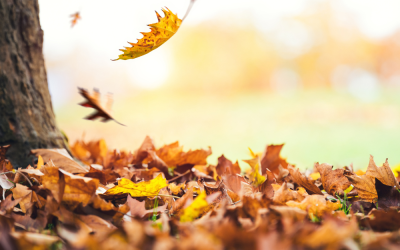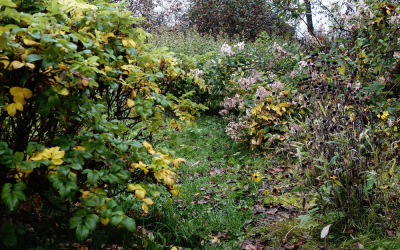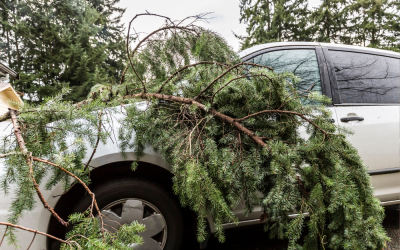While some routine garden tasks can be handled alone, others may require help from an expert. Tree care and maintenance is one area where this is likely to be the case.
If you are based in the Northwest, your local tree surgeon Manchester will be able to assess your trees and shrubbery to identify any key issues that need addressing so they can restore them to full health.
At times, it can be difficult to determine when it is necessary to contact a tree surgeon – so to help we’ve put together a list of key signs to look out for.
Any of these could indicate that help from a trained professional is required to assist with any difficulties you might be having with the trees in your garden or plot.
Assessing The Tree Yourself
A trained tree surgeon might be able to help identify issues you may not be aware of (for example if your tree appears to be suffering a “mystery ailment” you have not been able to identify yourself).
Before contacting a tree surgeon, it can be useful to make an assessment yourself for any visible signs of disease, decay or damage that you can alert them to. Start from the ground up, taking note of any unusual features or changes as you go.
Roots
Root Damage Or Severed Roots
While it can be difficult to determine at surface level, root damage can be observed in a number of ways from above ground. One major sign is root damage: this indicates that the tree is not getting the nutrients from the soil that it needs to stay healthy.
Roots Affecting Structural Elements
If roots are digging into pipes or surrounding buildings, this is natural and can be dealt with without harm to the tree – however, it is something that requires specialist help. Other signs of damage to look for in roots include decay, Funghi or lifted ground.
The Trunk
Bark Changes
Changes to the pattern and texture of the bark can indicate problems. This might appear as loose bark, peeling, cracks or deep slits just above the soil (these can be signs of root damage), or sections of dead bark on the branches or limbs.
Examine the rest of the trunk for signs of swelling, soft or decaying wood, small holes or cavities – as these could all be signs of decay.
You may see more unusual changes such as included bark (otherwise known as “ingrown bark tissue” – where two or more stems grow close together, creating a V formation vulnerable to splitting or breaking (as opposed to the usual U formation), often as a result of improper pruning.
Branches
Leaning Limbs Or Branches
If branches are leaning or worse – hanging, this is a clear sign of branch or limb damage, which can be hazardous. In this case, a tree surgeon will be required to check for cracks and splits to assess the severity of the damage and fall risk.
Weak, V-shaped Branch “Unions”
A weak branch union is an example of structural weakness in trees and occurs when a side branch grows at an acute angle, which can lead to it fusing to the main stem, pushing the bark together.
As a result, the branch is not completely attached to the main stem, which can cause it to break off. This is usually recognised by a “seam” running down from both branches.
Overly thick, Dense Branches
This can occur where trees are planted in close proximity to each other, causing the branches to grow over each other. This can cause friction, which can then lead to rot, putting the health of both trees at risk.
Even if rot does not set in, overgrown canopies can impact how much sunlight and water the trees receive – and if they are very dense, they may even be at risk of breakage.
Dead Or Dying Branches
These may be low-hanging, with little bark and no leaves. Typically trees in this state (on the brink of becoming a dead tree or a “snag” have branches that differ in colour to those on a healthy tree. It might also have difficulty holding its shape.
The Canopy (Leaves)
Leaf Deformities
Spotty, holey, odd-coloured or otherwise deformed leaves can be signs of disease, mites, insects, herbicides or adverse weather events that have caused the tree’s leaves to alter in appearance.
Large Crown
If the crown of the tree (the uppermost part) has become so large that it is blocking out too much sun, then it may need pruning.
Lacking Leaves
If there are few leaves on a tree, this may be due to natural seasonal or weather changes – however it could also be a sign of hidden diseases or pests.
Overall Structure Of The Tree
Structural damage to trees can have a number of different causes. Adverse weather conditions, pests, heavy pruning or construction or excavation work can all impact the health of a tree, causing it to weaken. A tree surgeon can help identify the reason for weakened tree structure and address the underlying issue.
Leaning Tree
While a degree of leaning is expected, anything over 15 degrees may be a sign that a tree is dying – or at the least has root damage. Leaning trees pose a risk of falling and causing injury or damage to surrounding structures.
Dead Or Dying Trees
If you are not sure whether your tree is dead, pick a small twig from the tree and break it in two – if it’s green on the inside, then there is a chance it can be restored to health. If a tree has reached its full snag state, then you may choose to have it removed.
A dead tree can be a sorry sight, especially if it has been part of your garden or plot for quite some time. Despite this, it’s good to know that snags can provide habitats for all kinds of wildlife to flourish -so depending on where it is situated, you might choose to leave it in place (unless it has a disease that could be transferred to other trees).
Usually, if a tree is removed, depending on the health of the tree at the time of felling it is either sent to a landfill or made into products such as wood chips.
If it was a garden tree with special significance to your family, you could ask to keep some of the wood to season and make into items such as coasters or picture frames – that way, the tree will always be part of your home.
How A Tree Surgeon Can Help
Tree surgeons are responsible for the management and cultivation of trees, shrubs and other woody perennials.
The tasks involved in tree work are varied and range from planting new stock to felling trees that are considered too unsafe or unhealthy to remain in place.
The reasons for contacting a tree surgeon to carry out work are equally varied and may include:
- Inspecting the tree for root damage
- Felling trees
- Planting trees
- Crown reduction and thinning
- Tree survey and reports, e.g. for insurance purposes
- Disease and pest control
- Coppicing, pollarding and bracing
It may be that a tree surgeon can fix the issue or, if the tree is damaged beyond repair, remove the tree altogether.
Questions To Ask A Tree Surgeon
Before having any type of work carried out, it’s important to first ask some key questions. Here are some examples of questions you might wish to ask a tree surgeon before hiring them:
- Do you have insurance cover? (Most tree surgeons are covered by a minimum of £5 million for employers and public liability and should be able to show evidence of this if asked.
- Are you able to carry out work to British Standard BS3998?
- What training and/or qualifications have you received (e.g. a chainsaw certificate).
- Do you have full safety equipment and PPI?
- Are you trained in health and safety?
- Do you have any references?
- Can you supply a free quote including a full statement of work?
While certain changes in the appearance of trees are natural, others indicate possible signs of disease or decay. In instances such as this, contacting your local Tree surgeon in Manchester is essential to help prevent any diseases spreading to surrounding trees.
Tree surgeons also help to make our gardens, woodlands and other areas safer, helping to protect passers-by from falling branches or even entire trees and preventing damage to surrounding structures such as vehicles or buildings.
If you are based in the Northwest and need assistance with tree care and maintenance, get in touch with our team today to find out how we can help.



